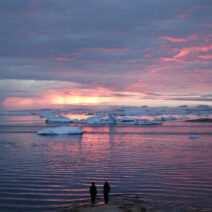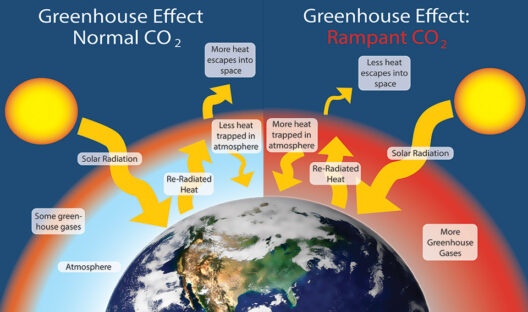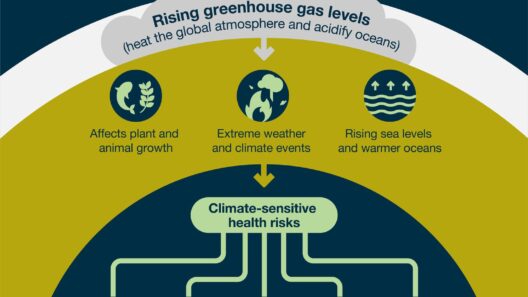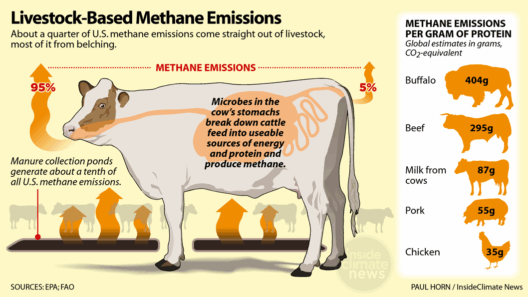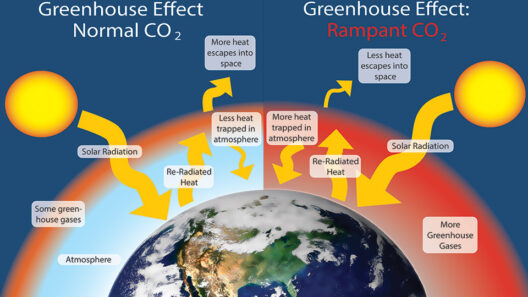The story of climate change is a grand chronicle, where the earth itself metamorphoses alongside the tempestuous interplay of natural forces and human endeavor. Imagine the planet as an intricate tapestry, woven from threads of ice, heat, and time, each fiber reflecting epochs of evolution. From the primordial ice ages that sculpted landscapes to the contemporary debates championed by the Intergovernmental Panel on Climate Change (IPCC), this timeline delineates the essential chapters of a saga that continues to unfold.
The journey commences approximately two million years ago during the Pleistocene epoch, an era characterized by glacial cycles that dominated Earth’s climatic narrative. Vast sheets of ice enshrouded considerable portions of the northern hemisphere. This was an epoch not merely of harsh winters but also of climatic fluctuations; the planet oscillated between glacial and interglacial periods, manifesting a natural symphony of change. During these ice ages, the impact on flora and fauna was profound—biomes shifted, species migrated, and ecosystems were reshaped in response to the icy dominion.
As the world transitioned into the Holocene epoch around 11,700 years ago, a gradual warming ensued, leading to the thawing of ice sheets. This retreat did not merely herald the end of an ice age; it unveiled fertile plains and expansive forests. Human civilization burgeoned during this period of climatic stability, transitioning from hunter-gatherer lifestyles to agricultural societies. The burgeoning of agriculture marked a pivotal transformation—sowing seeds of human impact on the environment. The cultivation of crops altered landscapes, and with it, humans began to carve their indelible imprint on the earth.
Fast forward to the 18th and 19th centuries, a period often romanticized as the dawn of human industriousness—the Industrial Revolution. This era can be likened to a double-edged sword, propelling technological marvels while unleashing torrents of carbon emissions into the atmosphere. As the steam engine roared to life and factories proliferated, a new era of fossil fuel consumption began. The once delicate balance of atmospheric gasses, with carbon dioxide levels stabilized around 280 parts per million, faced an unprecedented perturbation. Industrial activities propelled this figure upwards, setting the stage for climate change as a phenomenon now looming ominously on the horizon.
By the mid-20th century, scientific awareness of climate change burgeoned. Pioneering studies began to elucidate the atmospheric consequences of human activity. It was during the 1950s that Dr. Charles David Keeling began tracking atmospheric carbon dioxide at the Mauna Loa Observatory in Hawaii, providing clear empirical evidence of increasing CO2 levels. His iconic Keeling Curve demonstrated a relentless upward trajectory, a stark indicator of anthropogenic influence on climate—a clarion call heralding the onset of environmental consciousness.
The 1970s witnessed an amplification of awareness, spurring grassroots movements advocating environmental conservation. The first Earth Day in 1970 emerged as a cultural awakening, akin to a collective realization that the environment required urgent attention. This decade also bore witness to the establishment of pivotal organizations, including the U.S. Environmental Protection Agency. Yet, these measures represented only the tip of the iceberg as global efforts to combat climate change were nascent, fraught with political and public inertia.
As the 1980s progressed, the urgency of the climate crisis crystallized within scientific circles, leading to the formation of the Intergovernmental Panel on Climate Change (IPCC) in 1988. This body was established to provide a comprehensive assessment of climate change’s scientific basis, its impacts, and potential adaptation and mitigation strategies. The establishment of the IPCC can be viewed as a milestone akin to the moment a lighthouse shines its beacon amidst encroaching fog—a guiding force aimed at informing policy amid rising concerns.
The subsequent decades were marked by increasingly dire warnings from the scientific community. Reports compiled by the IPCC illuminated the multifaceted nature of climate change, revealing its repercussions extending from local ecosystems to global weather patterns. The findings were sobering: rising sea levels threaten coastal communities, extreme weather events become regular occurrences, and biodiversity faces unprecedented losses. Each report unfurled the alarming tapestry of consequences that awaited humanity if concerted action was not taken.
In tandem, the late 20th century witnessed the advent of international treaties aimed at curbing greenhouse gas emissions. The Kyoto Protocol of 1997 marked a watershed moment, establishing binding targets for industrialized nations—a coordinated effort to address a global crisis. Yet, compliance remained elusive, and the treaty’s effectiveness was hampered by political reluctance and economic concerns. Progress was often mired in the quagmire of geopolitics, showcasing the complexities of achieving a unified response to a multifaceted challenge.
As the millennia turned, entered the 21st century, climate change began to permeate mainstream discourse. Policymakers, scientists, and activists converged, advocating for a more proactive approach. The Paris Agreement of 2015 represented a paradigm shift—a global accord aimed at limiting global warming to well below 2 degrees Celsius. This agreement—while ambitious—highlighted the delicate balance between the stark realities of climate science and the socioeconomic dynamics that often cloud efficacy in policy enactment.
In the present day, the drumbeat of climate change reverberates louder than ever. The consequences of inaction are no longer distant threats but palpable realities, manifesting in the form of fires, floods, and rising temperatures. The urgency for climate consciousness is paramount, and the symphony we compose today will resonate for generations to come. The narrative of climate change continues to evolve, intertwining the legacies of mankind’s past with the pressing demands of the future.
Thus, the tale of climate change remains an ongoing saga, a testament to the intertwining threads of history, science, and human action. Each epoch lays the groundwork for the next, creating a narrative that is as compelling as it is crucial—a reminder that the stewardship of our planet requires collective agency and unwavering resolve.

